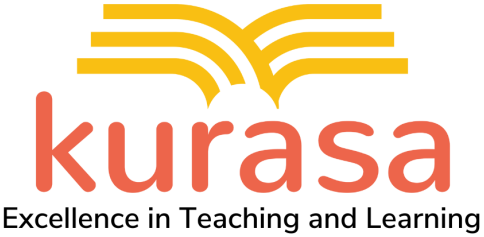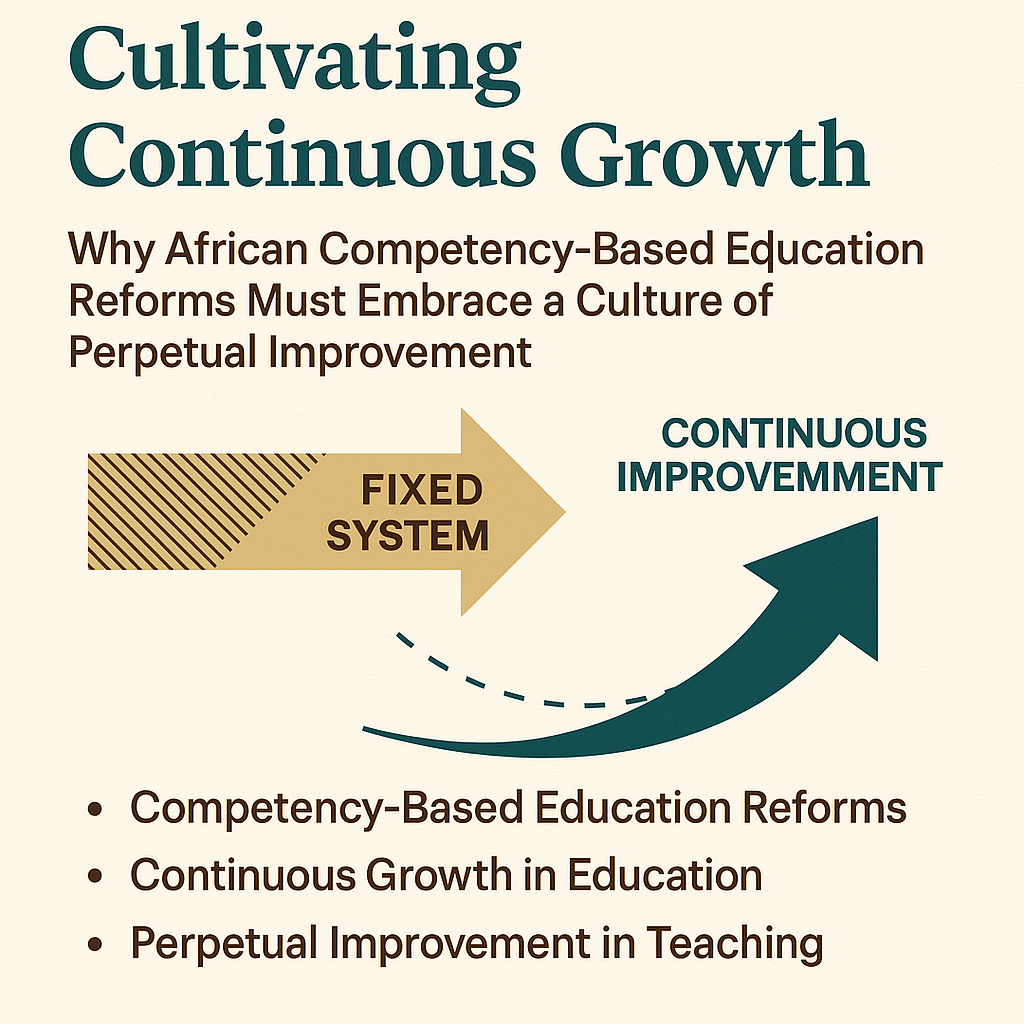Quality Assurance and Standards Officers (QASOs) are the missing link in Kenya’s Competency-Based Education (CBE) implementation. Far more than inspectors, QASOs have the potential to become powerful mentors and instructional leaders — bridging the gap between Ministry of Education policy and actual classroom practice. With the right digital tools, real-time data, and coaching mindset, QASOs can help deliver the promise of learner-centered teaching, equitable pathways in senior school, and improved outcomes across the country.
From “Inspector” to Instructional Leader
Kenya intentionally replaced the term inspector with Quality Assurance and Standards Officer to shed the stigma of fault-finding and encourage a partnership approach. In the past, inspectors were viewed as punitive overseers from “above,” instilling fear of victimization among teachers. Renaming them QASOs signaled that their mission is to improve quality by working alongside teachers as colleagues rather than adversaries. However, a mere title change is not enough. Many in the education sector still unconsciously treat QASOs as enforcers, and some QASOs may still act like the inspectors of old. This legacy mindset undermines the potential of QASOs to support and inspire teachers.
Under CBC, instructional leadership is needed at every level – and QASOs are uniquely positioned to provide it at the school and zonal level. Education reforms in Kenya have faltered before due in part to ineffective and inefficient supervision. Strengthening the Directorate of Quality Assurance and Standards (DQAS) and its officers’ skills has long been called for. Now is the time to fulfill that call by empowering QASOs to be true instructional leaders who coach teachers in new pedagogy, rather than inspectors who only check for compliance.
Why CBC Demands a New Approach
The Competency-Based Curriculum represents a transformative shift from the old content-heavy, exam-centered 8-4-4 system to a learner-centered, skills-focused model. Structured as a 2-6-3-3-3 system, CBC aims to nurture each learner’s talents early, reduce exam pressure, and develop seven core competencies (such as critical thinking, communication, and digital literacy) essential for the 21st century. In CBC classrooms, you’ll see pupils engaged in practical activities, problem-solving tasks, and formative assessments that track progress in real time, rather than cramming for a single high-stakes exam.
However, the success of CBC hinges on teachers’ preparedness to adopt these new methodologies. It’s one thing to design a learner-centered curriculum on paper; it’s another to make it come alive in a rural classroom of 50 students with limited resources. Teachers require continuous support to shift their instructional practices and assessment methods. Unfortunately, many teachers have not received adequate training or follow-up. A recent study in a marginalized Kenyan county found that 28% of teachers had not attended any CBC retooling training, and among those who did, 91% rated the training quality as poor. This stark finding highlights a critical gap: teachers are eager for guidance and mentorship in implementing CBC, but the support systems have lagged behind the policy.
This is where QASOs can be game-changers. As the bridge between policy and practice, QASOs can interpret and localize Ministry of Education directives for teachers, ensuring that the lofty ideals of CBC – nurturing 21st-century skills, using formative assessment, and differentiating instruction – actually translate into classroom techniques. They can also relay ground realities back to policy makers, creating a feedback loop to refine the curriculum rollout. In essence, QASOs can become the linchpin connecting the intentions of CBC with the everyday experiences of teachers and learners.
Mentors on the Ground: QASOs as Coaches, Not Police
Imagine a Quality Assurance officer walking into a school not with a punitive checklist, but with a collaborative plan. In this vision, a QASO’s visit is a welcomed opportunity for growth. They observe a lesson not to tally mistakes, but to understand the context and offer constructive feedback. After the lesson, the QASO sits with the teacher to discuss what went well and what could improve, perhaps suggesting a more learner-centered approach for a topic or demonstrating how to integrate a simple formative assessment technique. Over time, the teacher trusts the QASO as a mentor invested in their professional growth.
To achieve this, QASOs must embrace a coaching mindset. They should act as instructional coaches – a role akin to that of a seasoned friend who guides teachers in refining their craft. Key shifts in practice could include:
- Collaborative Lesson Observation: Conducting pre-arranged classroom visits with a focus on specific areas (like use of group work or project-based learning) and providing written and verbal feedback centered on improvement, not punishment.
- Teacher Professional Development: Organizing school-based support sessions such as workshops or lesson study groups where teachers collectively design CBC-aligned lessons and critique each other constructively, with the QASO facilitating the discussion.
- Sharing Best Practices: Identifying innovative teaching practices in one school (e.g. a great method for teaching critical thinking in science) and helping to spread that practice to other schools in the area. QASOs, who travel between schools, are in a prime position to connect educators and create communities of practice.
- Guiding Formative Assessment: Coaching teachers on how to develop and use continuous assessments – for example, helping teachers create rubrics to evaluate competencies like creativity or collaboration, and showing how to use those assessment results to tailor instruction.
This mentor–coach approach builds teachers’ confidence and competence. It also humanizes the QASO: no longer an intimidating auditor, but a partner walking the journey of improving learning outcomes together. When QASOs provide such school-based support, teachers are more likely to open up about challenges they face (be it large class sizes or difficult new content), allowing for joint problem-solving. The end result is a stronger implementation of CBC at the classroom level – exactly where it matters most.
Data and Dashboards: A 21st-Century Toolkit for QASOs
To supercharge their new role, QASOs need to leverage technology and real-time data. In the 21st century, digital inclusion isn’t just for students – it’s for the education officers too. Equipping QASOs with the right digital tools (tablets, apps, and dashboards) can amplify their effectiveness multifold.
Picture a national or county-level dashboard where each QASO logs observations, teacher needs, and student performance indicators after school visits. Patterns and red flags would emerge quickly. For instance, if multiple QASOs report that teachers are struggling with a particular strand of the CBC curriculum (say, integrating critical thinking tasks in mathematics), the system can flag this. The Ministry and TSC can respond with targeted teacher training or resources for that area. Conversely, a dashboard might show one zone excelling in formative assessment practices – a success story that can be studied and replicated elsewhere.
Digital tools also enable QASOs to practice more data-driven instructional leadership. With a tablet in hand, a QASO could instantly access a school’s profile: previous visit reports, teacher professional development records, even student continuous assessment scores. Instead of working in the dark or relying on year-old exam results, the QASO arrives informed by current data. This makes their support timely and tailored. For example, if the dashboard shows class X in School Y is lagging in literacy skills, the QASO can focus their visit on coaching the language teacher and perhaps bring extra reading materials. Creating digital assessment platforms (with offline capability for low-connectivity areas) would further help in documenting and analyzing learner progress in real time. Such platforms could feed into QASOs’ dashboards, ensuring that even in remote schools, students’ competency development is tracked and supported.
Moreover, using technology can help standardize and improve the quality of QASO interventions. When QASOs have a common digital toolkit, it encourages consistency in how they monitor curriculum fidelity and support teachers. It also increases accountability – both of teachers and of QASOs themselves – as data replaces anecdote. Importantly, tech integration must be accompanied by training QASOs in data literacy: they need to not just collect data but analyze and act on it. With the right training and tools, QASOs can become tech-savvy champions of digital inclusion, helping bring even the most remote schools into the fold of the 21st-century education ecosystem.
Guardians of Equity in Senior School Transitions
One of the most revolutionary promises of CBC is to offer equitable pathways for learners as they transition to senior secondary education. Unlike the one-size-fits-all path of 8-4-4, CBC’s senior school (Grades 10-12) is envisioned to have different tracks – for example, STEM, arts, technical and vocational pathways – so that students can pursue their strengths and interests. But with this diversification comes the risk of inequity: without careful oversight, rural or under-resourced areas might funnel students into certain tracks due to lack of facilities, or bias could creep into how learners are guided into pathways.
QASOs should be on the frontlines of guarding equity in these transitions. As Ministry representatives on the ground, they can monitor how schools implement the process of advising and placing students into junior and senior secondary pathways. Are all students being given a fair opportunity to discover their talents through the lower grades? Are assessments of competencies being done fairly and consistently across schools? QASOs can ensure that curriculum fidelity at the primary and junior secondary level is maintained – meaning every school teaches the full breadth of the CBC, including arts, sports, digital literacy and life skills, not just the academic core. This ensures that a child’s exposure is not limited by their school’s context, which is crucial before they choose a senior school track.
Additionally, QASOs can identify resource gaps that might skew pathway opportunities. For instance, if a county has few schools with laboratories for STEM, QASOs can highlight this to policymakers and advocate for interim solutions (such as resource sharing between schools or mobile science labs) to avoid unfairly limiting STEM prospects for an entire region. They can also facilitate career guidance sessions or bring in experts so that even in remote communities, students and parents learn about the new pathways in CBC and make informed decisions. By acting as the eyes and ears of equity, QASOs help shape a system where a learner’s future is determined by their interests and abilities – not their postal code or socio-economic status.
A Call to Embrace the New QASO
The transformation of QASOs from inspectors to mentors is not just a nice-to-have – it is the missing lever we need to fully realize CBC’s potential. To make this happen, bold action is required from both the top echelons of policy and the QASOs on the ground:
- Policymakers and the TSC must invest in retooling the QASOs themselves. This means comprehensive training in coaching skills, CBC content, data use, and instructional leadership techniques. Past research has noted that QASOs often had only general teacher training and needed special preparation for their unique role. It’s time to act on these insights. Provide QASOs with the resources, funding, and modern tools to do their job effectively – whether it’s fuel for reaching far-flung schools or a functional tablet with an analytics dashboard. Indeed, studies have recommended adequately financing QASOs and equipping them with assessment skills to intensify their advisory role in improving teaching and learning. We should heed that advice across the country, updating it for the digital age.
- Quality Assurance Officers themselves must seize this opportunity to redefine their identity. Every QASO should approach schools with humility and a learning mindset – ready to listen, learn, and support. They should proactively build trust with teachers, perhaps starting visits by saying, “I’m here to support and learn from your experiences with CBC.” Embracing technology and continuous learning is part of this new identity; a QASO can no longer afford to be analog in a digital world. By engaging in their own professional development and staying current with educational innovations, QASOs will be better mentors. In essence, QASOs need to become champions of the very learner-centered, lifelong learning ethos that CBC espouses for students.
The time for incremental tweaks is over – we need a radical shift in how we view and utilize our Quality Assurance and Standards Officers. Empowered, knowledgeable, and well-resourced QASOs can become agents of systems change: the human bridge between policy vision and classroom reality, the mentors who ignite 21st-century teaching in our schools, and the guardians who ensure no learner is left behind on their chosen path. Kenya’s CBC journey is at a critical juncture; the success of this bold education reform hinges on effective on-ground support and oversight. Let’s unleash the full potential of QASOs as the driving force for quality and equity in our schools.
Call to Action: Policymakers, re-imagine and re-tool the QASO cadre for this new era. Invest in their capacity and technology. QASOs, embrace the mentor’s mantle and become the inspirational coaches our teachers deserve. Together, let’s bridge the gap between competency-based curriculum policy and practice – because the future of our children’s education depends on it.


